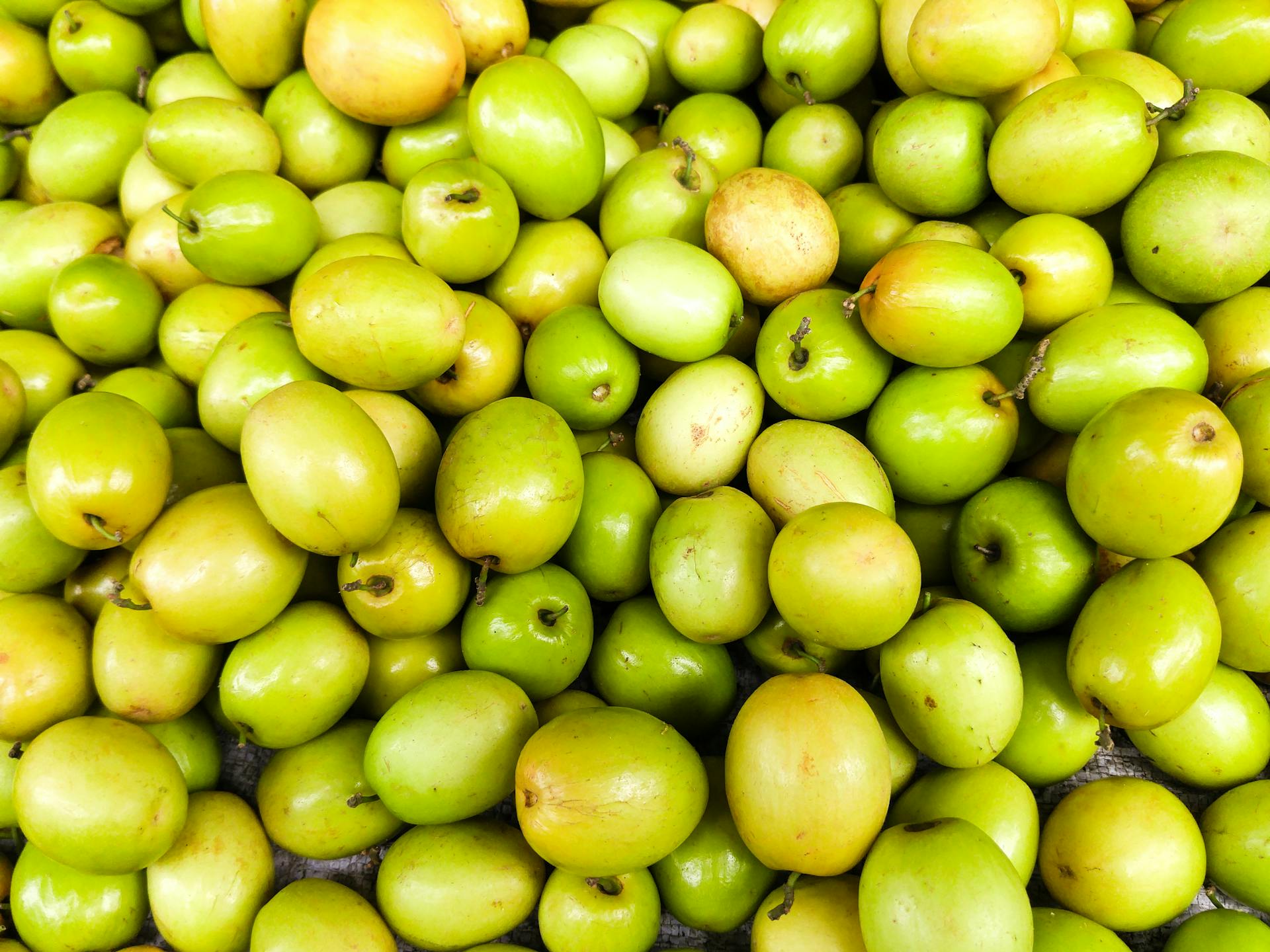
Raw food diets for dogs have been gaining popularity in recent years, but it's essential to understand the potential risks and benefits before making a decision.
Some proponents of raw food diets claim that they can improve a dog's overall health and wellbeing, but a study found that a significant number of raw-fed dogs had bacterial contamination in their feces.
Dogs fed raw food may be at a lower risk of developing allergies and sensitivities, but this has not been consistently proven in scientific studies.
The cost of raw food diets can be significantly higher than traditional kibble, with some owners spending up to 50% more on their dog's food.
Nutritional Benefits and Risks
Raw dog food diets can provide nutritional benefits, such as improved coat health and reduced digestive issues, but they also come with risks.
Some supporters of raw food diets argue that feeding a variety of foods will lessen the risk of nutritional imbalance, but this is not always the case. A nutritional analysis of 5 raw food diets found low calcium and phosphorus in 3 of the 5 diets, and 2 diets were deficient in potassium, magnesium, and zinc.
Nutritional deficiencies and diseases can be caused by feeding a diet with too much muscle meat and not enough of the other "parts" that create nutritional balance. For example, a wolf would eat a whole animal carcass that contains muscle meat, bone, tendons, organs, skin, and fur, making for a nutritionally complete meal.
Dogs with pancreatitis or other digestive issues may not be suitable for a raw diet, and puppies are also not good candidates due to the risk of bone deformities and growth issues.
Nutritional Benefit or Risk
There are no published level 1, 2, or 3 studies of nutritional risk or benefit of raw meat feeding to dogs or cats.
Most vets recommend against feeding a raw diet due to the risk of disease and nutritional deficiencies, but some pet owners swear by the benefits.
Raw dog food diets can be nutritionally unbalanced, with deficiencies in calcium, phosphorus, and other essential nutrients. In fact, a nutritional analysis of 5 raw food diets found low calcium and phosphorus in 3 of the 5 diets.
Expand your knowledge: Risks of Feeding Raw Food to Dogs
Some raw dog food diets can be high in vitamin D, while others are deficient in potassium, magnesium, and zinc.
Feeding a variety of foods can help lessen the risk of nutritional imbalance, but it's still not a guarantee.
Here are some potential nutritional risks associated with raw dog food diets:
- Hypervitaminosis A
- Feline pansteatitis
- Nutritional osteodystrophy
- Nutritional secondary hyperparathyroidism
It's worth noting that dogs have different nutritional requirements depending on their age, health, and lifestyle, and a raw dog food diet may not provide the necessary balance of nutrients for every dog.
Low-Carb and Grain-Free
Raw feeding can be a game-changer for pets with food allergies or sensitive stomachs, as it eliminates grains found in most commercial kibble.
Many parents choose raw feeding to help their pets lose weight, and it's effective because raw meat has no carbs but still packs plenty of calories and protein.
Raw meat is a nutrient-dense food source that can help pets stay full and satisfied, making it a great option for weight management.
By choosing raw feeding, pet owners can say goodbye to grains and hello to a healthier diet for their furry friends.
For your interest: Pros and Cons of Feeding Dogs Human Food
Diet and Safety
Feeding your dog a raw diet can be a complex decision, and it's essential to consider the potential risks and challenges. Raw feeding carries serious risks for humans and their pets if not done correctly, and good hygiene and proper food handling techniques are crucial to minimize the risk of food-borne illness.
The Centers for Disease Control and Prevention (CDC) estimates that food-borne illnesses affect 48 million Americans yearly, and raw meat can become contaminated during handling and processing. In fact, 3,000 Americans die each year due to food-borne illness.
Consulting with a veterinary nutritionist is recommended to ensure that the recipe you follow provides balanced nutrition for your pet. These specialists will consider your dog's specific protein, fat, mineral, and vitamin requirements, and supplements may be needed to ensure that the diet is balanced for your pet's individual needs.
Dog Diet
A dog's diet is a crucial aspect of their overall health and well-being. Dogs are omnivores, which means they need a balanced mix of proteins, carbohydrates, fibers, and other nutrients to thrive.
Dogs require different nutritional needs at various life stages, such as puppies, adults, and pregnant or nursing dogs. A six-month-old puppy, for example, has different nutritional needs than a dog with kidney disease.
A raw dog food diet can be beneficial for some dogs, but it's not without its risks. Many dog owners choose raw diets based on online myths and scare tactics about commercial pet food, but the research shows that raw diets can be unbalanced and lead to nutritional deficiencies or excesses.
Commercial raw dog food diets can be contaminated with bacterial pathogens, and even if handled properly, there's still a risk of food-borne illness. To minimize this risk, it's essential to practice good hygiene and proper food handling techniques.
The FDA recommends that owners thoroughly wash their hands with soap and water for at least 20 seconds after handling raw pet food or touching surfaces that have come into contact with it. Disinfecting surfaces is also crucial to prevent cross-contamination.
Some dog owners, like Barbara Benjamin-Creel, choose to make their own raw dog food at home. This can be cost-effective, but it requires careful attention to nutritional balance and ingredient quality.
You might enjoy: Different Kinds of Dog Food
A well-balanced raw dog food diet should include muscle meat, bones, organ meats, raw eggs, vegetables, and fruits. However, it's essential to ensure that the diet is complete and balanced to avoid nutritional deficiencies.
The following table highlights some of the key ingredients and nutritional considerations for a raw dog food diet:
Ultimately, it's essential to consult with a veterinarian or a canine nutritionist to determine the best diet for your dog based on their individual needs and health status.
Discuss the Switch with a Vet and Nutritionist
Before making the switch to a raw food diet, it's crucial to discuss the decision with your veterinarian and ideally a veterinary nutritionist. Your veterinarian can talk with you about the risks involved in raw food diets for dogs, particularly if your pet is young, old, or debilitated.
Consulting with a veterinary nutritionist ensures that the recipe you follow provides balanced nutrition for your pet. These specialists will consider your dog’s specific protein, fat, mineral, and vitamin requirements.
Dog mineral and vitamin requirements differ from humans, so supplements will likely be needed to ensure that the diet is balanced for your pet’s individual needs.
Related reading: Balanced Raw Food Diet for Dogs
Risks and Precautions
Raw food diets for dogs can pose several risks to both the canine and human members of the household. According to the Centers for Disease Control and Prevention, food-borne illnesses affect 48 million Americans yearly, and the risk of contracting these illnesses is higher when handling raw meat.
The risk of disease is particularly high for people who are young, old, pregnant, or immunosuppressed, as they may be more susceptible to the bacteria present in raw meat. In fact, 3,000 Americans die each year due to food-borne illness. To minimize this risk, it's essential to handle raw food carefully, washing hands regularly before and after handling meat or utensils used to prepare it.
Freezing the meat prior to feeding may kill some parasites, but it won't eliminate the risk entirely. Raw pork and raw fish from the Pacific Northwest carry the greatest risk for parasites, making it crucial to take precautions when feeding your dog a raw food diet.
Consider reading: What to Feed Dogs When You Run Out of Food
Nutritional Risk Level 4
There are isolated case reports that could be classified as level 4 evidence of risk associated with raw food diets.
Hypervitaminosis A was reported in a cat fed a pork liver-based raw food, which returned to normal health when the diet was changed to a commercial canned food.
Feline pansteatitis was reported in 10 cats fed a homemade diet of cooked pig brain or raw and cooked oily fish.
Nutritional osteodystrophy was reported in 2 litters of 6-week-old large breed puppies fed a bones and raw food (BARF) diet from about 3 weeks of age.
Nutritional secondary hyperparathyroidism has also been reported in a litter of German shepherd puppies fed a diet of 80% rice with 20% raw meat, which contained excessive amounts of phosphorus.
Not all puppies fed the diet experienced problems, suggesting individual or genetic susceptibility.
A nutritional analysis of 5 raw food diets found low calcium and phosphorus in 3 of the 5 diets.
Two commercial diets were high in vitamin D.
Risks and Precautions
Raw feeding carries a risk of disease, with 48 million Americans affected by food-borne illnesses each year, and 3,000 dying annually.
Parasite contamination is a significant concern, especially with wild carcasses, and freezing meat may not kill all parasites.
Handling raw meat can expose you to bacteria like Salmonella and E. coli, which can cause illness, and even if your pet shows no signs of illness, bacteria are continuously shed in their feces.
You're at higher risk if you're young, old, pregnant, or immunosuppressed, and even handling dried and freeze-dried treats can pose a risk.
Wash your hands regularly before and after handling raw meat or utensils, and consider using gloves to minimize exposure.
Freezing meat may reduce the number of bacteria present, but it won't kill all of it, and commercially manufactured raw meat diets and meat from grocery stores are more likely to be contaminated.
The cooking process usually kills parasite eggs or larvae, but they can live in raw meat for days, infecting your pet and potentially you if you don't wash your hands.
It's essential to discuss the switch to a raw diet with your vet and a veterinary nutritionist to ensure balanced nutrition for your pet and minimize risks.
Supplements may be needed to ensure the diet is balanced for your pet's individual needs, and their mineral and vitamin requirements differ from humans.
Store Properly
Wash your hands regularly before and after handling raw meat or utensils used to prepare it, and consider using gloves to add an extra layer of protection.
To prevent bacterial growth, keep raw meat in the fridge or freezer until it's time to serve, and dispose of leftovers after 4 hours at room temp.
Store your pet's meals in airlock containers to keep them fresh and separate from ready-to-eat foods, which can help prevent cross-contamination.
Raw meat should be stored at a temperature below 40 degrees Fahrenheit to slow down bacterial growth, so make sure to keep it in the fridge or freezer until it's time to serve.
Benefits and Considerations
Pet parents choose raw diets for their dogs because they believe it can improve their pet's overall health. Some potential benefits include a shinier coat and healthier skin.
Raw feeding can also help with dental health, as the abrasive texture of raw bones can help clean teeth.
Some pet owners report a reduction in allergies and sensitivities in their dogs.
Including Bones
Including bones in a raw diet for dogs can provide the nutritional benefit of added calcium and phosphorous, if the bones can be chewed and ingested.
Bones help maintain dental health by preventing tartar buildup.
However, bones in the diet can also pose health risks, including obstruction of the esophagus.
Too many bone fragments in the colon can lead to constipation.
What Are the Benefits?
Raw dog food diets have been touted as a healthier option for pets, and for some, it's been a game-changer. Many pet parents choose raw feeding for their pets because it's more beneficial than processed foods, according to Dr. Doug Knueven, a veterinarian who specializes in holistic medicine.
The benefits of raw feeding are numerous, including improved coat health and reduced digestive issues. For example, Barbara Benjamin-Creel's three dogs saw an immediate change in their coats after switching to a raw diet, and one dog with chronic digestive problems tolerated the raw diet better.
Raw diets can also improve breath quality and energy levels. As Benjamin-Creel notes, her dogs seem more energetic, and their breath is much better. However, it's essential to note that the cost of a raw dog food diet varies with the ingredients used and how it's prepared.
Some of the key ingredients in a raw dog food diet include muscle meat, bones, organ meats, raw eggs, vegetables, and fruits. These ingredients provide essential nutrients that can be lacking in processed dog foods.
Here are some of the key benefits of raw dog food diets:
- Improved coat health
- Reduced digestive issues
- Improved breath quality
- Increased energy levels
While raw dog food diets have their benefits, it's crucial to consult with a veterinarian to ensure the diet is well-balanced and meets your pet's nutritional needs.
Why Do People Feed Diets to Dogs?
Some people feed raw food diets to dogs because they want to feed more "natural" items. This can be due to concerns about their dog's health or trust issues with pet food manufacturers.
Commercial dog food is convenient and affordable, but some owners prefer raw food diets. A desire to feed their dog like its ancestors did in the wild may be a factor.
Dogs with food sensitivities or allergies may benefit from a home-prepared meal. A veterinary nutritionist should be involved in formulating a complete and balanced diet for these dogs.
Some owners opt to feed raw diets because they feel it's the best way to ensure their dog gets the nutrients it needs. However, this requires careful planning and consultation with a veterinary nutritionist.
You might enjoy: How Much Is a Raw Food Diet for Dogs
Frequently Asked Questions
Are dogs happier on raw diet?
Research suggests that a raw diet may improve canine cognitive and mental health, potentially leading to better behavior and overall well-being. However, more studies are needed to confirm the long-term effects of a raw diet on a dog's happiness and quality of life.
Do vets recommend fresh dog food?
While some veterinarians may recommend fresh dog food, many experts caution that it can be nutritionally imbalanced or contaminated with bacteria and parasites if not properly formulated and prepared. Consult with your veterinarian to determine the best diet for your dog.
Sources
- https://www.ncbi.nlm.nih.gov/pmc/articles/PMC3003575/
- https://www.webmd.com/pets/dogs/features/raw-dog-food-dietary-concerns-benefits-and-risks
- https://wagwalking.com/wellness/is-raw-feeding-your-pet-dangerous-for-your-health
- https://www.petmd.com/dog/nutrition/5-mistakes-people-make-when-feeding-pets-raw-food-diet
- https://www.thesprucepets.com/raw-food-diet-pros-cons-5114909
Featured Images: pexels.com


